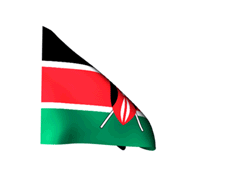HISTORY OF AYODHYA’S DISPUTE

Story of Disputed Land
Lord Ram according to Ramayana was born in Ayodhya on the banks of Sarayu River. Ayodhya is currently located in Uttar Pradesh. According to Hindus the disputed location was earlier an ancient temple located at the birthplace of Lord Ram. Also, believed this temple was destroyed by Mughal Emperor Babur in 1528 where he built a mosque Babri Masjid which was subsequently demolished by Kar Sewaks on December 6,1992.
Trails of litigations over the disputed land
In 1855 during the British Raj a suit was filed by Mahanth Raghubar Das against the Secretary of State for India seeking permission to construct a temple for Sri Ram at Ayodhya. Trial Sub – Court ruled that land is the birth place of Lord Ram. This was appealed against at Faizabad District Court where it got dismissed.
On December 23,1949 when idols were found inside the Babri Masjid a crowd of 60-80 broke the locks of mosque and entered it. After which the charge of the property was given to District Magistrate Faizabad.
The first ever suit filed in independent India was on January 16, 1950 by Gopal Sing. He instituted the suit claiming his right to go inside and worship in the place where the idols were kept. He also claimed UP Government had no right to interfere in the said rights. Prohibitory injunction was sought after which no one could enter the area.
In 1959 another suit was filed by Paramhans Ramchandra Das(Nirmohi Akhara) against Zahoor Ahmad and seven others .The reliefs claimed were management of the place where the idols were kept should be given to the plaintiff. However, on December 6,1960 this suit was withdrawn due to various reasons.
In 1961 a regular suit was filed by Sunni Central Board of Waqfs and 9 others. In the plaint they claimed that there existed a mosque 433 years ago also, adjacent to the mosque there was a graveyard. They demanded clearance of Lord Ram’s idols from the premises and give the management of the premises to the Sunni Central Board.
Yet another suit was filed in 1989 by Bhagwan Sri Ram Birajman and Sri Ram Janam Bhoomi Ayodhya (the Deity), Asthan Sri Ram Janam Bhoomi, Ayodhya (the Birth Place of Lord Ram) in which the Deity and the Birth Place were considered to be Juristic persons. The suit was filed based on the cause of action that Hindus were not freely allowed to worship at the premises where the Deity was housed. The Court held that the premises belonged to the idols and it was their absolute property and the gates were open for all Hindus. Also, the Hon’ble Court allowed the existing structures to be demolished so that the temple construction could start. After the decision there was a lot of communal violence throughout the country, due to which the case was transferred to Allahabad High Court.
The Hon’ble High Court of Allahabad on September 30, 2010 held that 2.77 acres of land be divided into 3 parts, out of which 1/3rd going to the deity’s construction of Ram Temple, 1/3rd going to Muslim Waqf Board and the remaining 1/3rd going to the Nirmohi Akhara.
This decision of the Hon’ble High Court was appealed and a Constitutional Bench of 5 Judges heard the first appeal on September 30th, 2010. The Supreme Court Constitutional Bench consisting of Chief Justice of India Ranjan Gogoi and Hon’ble Justices S A Bobde, D Y Chandrachud, Abdul Nazeer, Ashok Bhushan delivered a unanimous judgement on November 9th 2019. The Supreme Court held that the 2.77 acres of Land to be handed over for construction of Ram Mandir. Also, at the same time an alternate plot of 5 acres must be allotted to Sunni Waqf Board for construction of mosque. The Central Government has been directed to form a board for the scheme of construction within 3 months.
Thus, the long-fought battle over 2.77 acres of land came to an historic end.
Aakritee Gambhir
Associate
The Indian Lawyer




































Leave a Reply